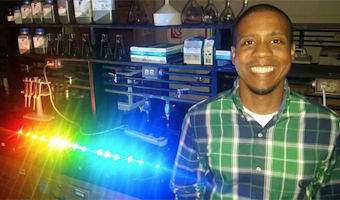The NQPI Seminar Series presents Travis White of Ohio University, on “Photochemical and Electrochemical Approaches to Homogeneous Catalytic Transformations”, on Thursday, March 28, at 4:10 p.m. in Clippinger Labs 194.

Travis White
Abstract: Storing solar energy in the form of chemical bonds (often termed “solar fuels”) is an attractive approach to generate renewable and storable energy sources. At the molecular level, understanding the factors that dictate light absorption, charge separation, catalyst-substrate interaction, and system regeneration provides valuable insight towards the intelligent design of more efficient catalytic systems. Research in my group focuses on the development of photo- and redox-active coordination and organometallic compounds to function as light-harvesting agents or catalysts for the conversion of stable, small molecules (e.g. H2O, CO2) to higher-energy species (e.g. H2, CO, HCO2H, etc.). This presentation will focus on results from two projects within my lab: 1) utilizing heteroleptic Cu(I) diphosphine/diimine light absorbers to drive solar H2 production and 2) deciphering steric and electronic contributions within Re(I) diimine electrocatalysts for CO2 reduction.



















Comments